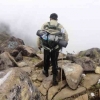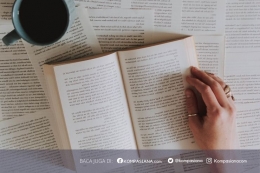Disbelieving look was evident from the face of four Senapatis of Srivijaya that day. When Narendra’s Samudra Raksa docked at the port, a war council was immediately assembled. But all of the Senapatis did not expected that Maharaja of Srivijaya—the man who, in a sense, individually responsible to the latest conflict—was absent.
The Maharaja was traveling to Candi Lesung Batu to perform prayer ritual, as explained by the Maharatu. The Senapatis had already guessed with whom the Maharaja traveled; since there were only three Kumaramatyas attended the war council.
Srindravarman, the Kumaramatya of Warfare, a plump richly-garbed man, led the war council. As he described the situation in the attacked Kedatuans, the Senapatis found out that it was worse than they thought. Even Kandra Kayet, who was boastful enough to say the Mongols as nothing more than a backward savage on a horseback before, was now tongue-tied. According to traders who barely escaped Champa, Mongol riders—cavalry steel-clad with lamellar armor from the rider to the warhorse and equipped with arrow and scimitar—stormed the capital city of the Kedatuan at dawn and ultimately took control of the city before nightfall. The defending hulubalangs were not given any chance to respond adequately due to the sudden and unexpected attack. Unfortunately, due to the chaotic circumstances, the escaping traders could not provide estimates of the number of the enemies.
Grim nuance at the war council was brightened when Maharatu Amretasari recalled the first and only time the army of Mongol Empire suffered loss in battlefield: The Battle of Ain Jalut. At the battle where Mongol army attacked the Muslim Mamluks, the Muslims had exploited the advantage of knowledge of the terrain and implemented hit-and-run tactics. She gave a notion to not engage the enemy in direct close-combat but to discreetly lure the Mongols out of the city to the adjacent forests; where the speed and strength of the cavalry will be hindered. The Champan Kumaramatya, Po Nagar, a white-haired little old lady, thought the strategy might work. At that moment, the Maharatu was seemed more resourceful than the Kumaramatya of Warfare himself.
For three consecutive days, they discussed the plan of the attack intensely. No sign of Sumatrabhumi whatsoever. The next day, a horn blasted from the direction of Vidhyadara Torana, the jeweled royal gate. The Maharaja has returned.
As the Senapatis and Kumaramatyas entered the balairung together to seek the Maharaja, all of them startled when they saw a stranger seated in the throne. The saffron robe and shaved head reminded them of the bhikku of Palembang School of Buddhism who typically found swarming the city.
But they even more startled when they realized it was actually Maharaja Sumatrabhumi who sat on his rightful throne.
(Continued to Chapter V)
(previous chapter)
Baca konten-konten menarik Kompasiana langsung dari smartphone kamu. Follow channel WhatsApp Kompasiana sekarang di sini: https://whatsapp.com/channel/0029VaYjYaL4Spk7WflFYJ2H








